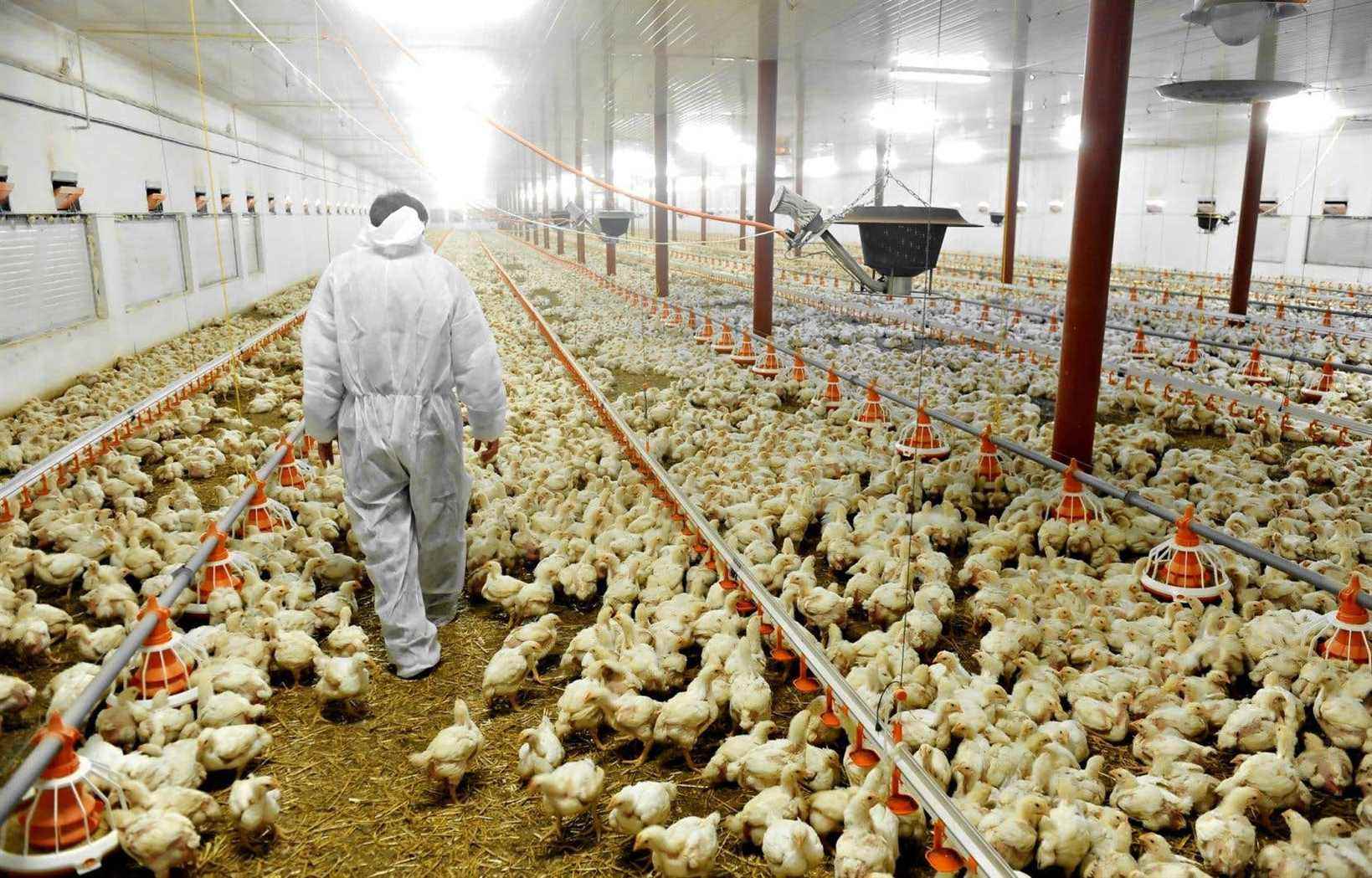After being detected in Ontario and Alberta over the past two weeks, the avian flu virus may have made its way to a poultry flock in Quebec, the Canadian Food Inspection Agency revealed on Monday ( CFIA), which is stingy with details.
“We are in the process of investigation in Quebec. We will only report confirmed cases,” said Nancy Rheault, Senior Director and Deputy Chief Veterinarian, during a media briefing.
The Poultry Breeders of Quebec, who are on “high alert”, indicated that this is a site that is not under quota. In other words, a small breeding.
“The situation has never been so critical for poultry farmers in Quebec,” declared their president, Pierre-Luc Leblanc, in an interview with The Canadian Press.
Farmers fear the disease will enter their buildings, which could wreak havoc.
“We could find mortality rates of up to 50, 60, 70%, estimated Mr. Leblanc. The whole site would probably become all euthanized. We are talking about major losses, many psychological effects for our breeders. »
Avian influenza, commonly known as “bird flu”, affects several birds intended for consumption – chickens, turkeys, quails and guinea fowl in particular –, pet birds and wild birds.
The CFIA indicates that there is no cure for this disease and that the mortality rate of birds with the disease is high. Already, more than 260,000 birds have either died or been euthanized in the country, it was said.
“Unprecedented” transmission
There is an “unprecedented” spread of the virus around the world, according to federal experts. Ottawa urges breeders and producers to be extra careful in the face of this “significant threat”.
The risks are linked to the migration of wild birds. The situation should therefore continue for “several months” and the CFIA says it expects new outbreaks across the country.
“Transmission can be direct, bird-to-bird,” Rheault said. It can also be spread indirectly through contact with surfaces contaminated with the virus from infected birds, such as clothing, shoes, bedding, food and water. »
Birds excrete the virus in their saliva, nasal secretions and feces. It is essential “to apply strict biosecurity measures at all times”, insists the agency.
“We did everything we could,” repeated Mr. Leblanc of Poultry Breeders many times, recalling good practices, in particular changing boots and clothes when entering a building, and disinfecting entrances as often as possible.
According to him, it is possible that consumers will observe a rise in prices if there is a decrease in supply, especially as demand is increased.
“Currently, the markets are already short. American imports are slow to come in. […] Already, there is a shortage of chicks which is announced because American farms have been affected. So we reduced our production by 3.5% below consumer demand. »
At the Fédération des producteurs d’œufs du Québec, the president, Paulin Bouchard, indicates that the virus is “at our doorstep” and that biosecurity measures are accentuated on farms in order to prevent the disease from entering livestock.
As a preventive measure, the certifiers will not require those who produce organically to give access to the outside to their hens, indicated Mr. Bouchard. In fact, they will ask for precisely the opposite.
And for those who have chickens at home, Mr. Bouchard recommends to be “very careful” in preventing contact with wild birds, in particular by keeping them in an enclosure with a roof and a fence.
Last Monday, the Ministry of Forests, Wildlife and Parks of Quebec announced that three first cases of avian flu have been detected in the province. They were a Canada goose, in Granby, and two snow geese, one in Saint-Jean-sur-le-Richelieu and the other in Saint-Isidore-de-Laprairie in Montérégie.
Cases of avian flu were detected last December in flocks in Newfoundland and Labrador, then in Nova Scotia and Ontario.
There is a correlation between the level of risk and migration routes, experts have explained. The cases that occurred in the Atlantic were likely linked to the “Eastern Flyway” and the current cases are coming from the United States through the “Central Mississippi Flyway”.
